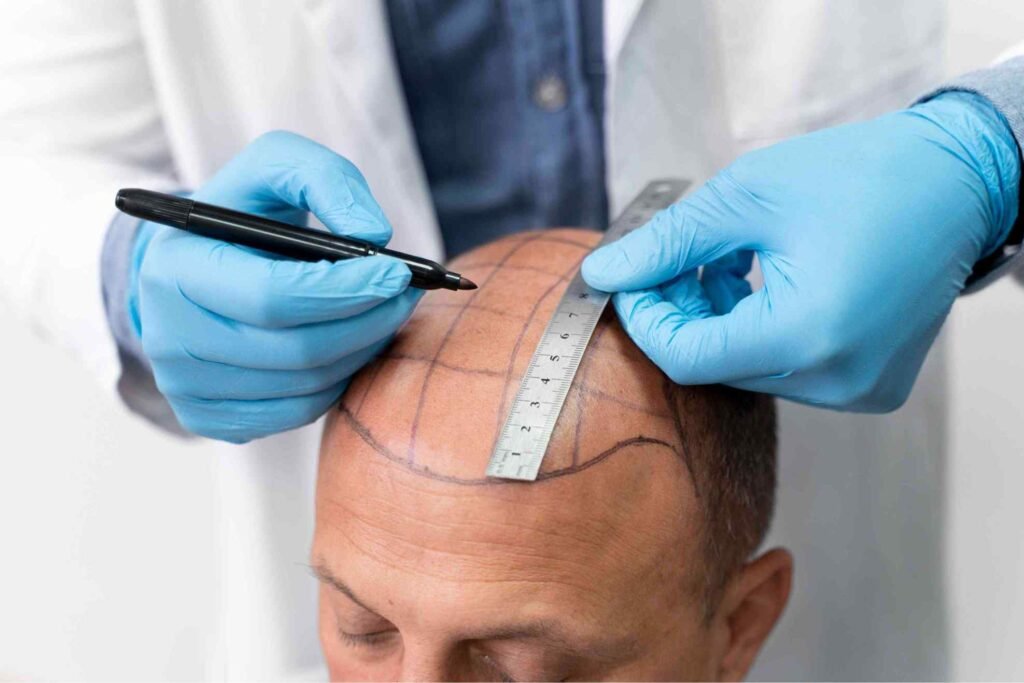Hair Loss Treatment for a More Confident You!
Hair loss is a widespread concern that affects millions of individuals across the globe. The impact of losing hair can be profound, affecting not just one’s appearance but also their confidence and self-esteem. Over the years, various hair loss treatment and remedies have been developed, but one of the most effective and permanent solutions is hair transplantation. This surgical procedure involves moving hair follicles from one part of the body, usually the back or sides of the scalp, to areas experiencing thinning or baldness. Hair loss Treatment has evolved significantly since its inception in the 1950s, with advancements in techniques and technology making it more accessible and yielding natural-looking results.
In today’s world, the pressure to maintain a youthful and healthy appearance is higher than ever. Social media, peer pressure, and personal desires all contribute to the increasing demand for aesthetic enhancements, including hair restoration. Hair transplants have become a preferred choice for many seeking to restore their hair because of their long-lasting and natural results. Whether it’s due to genetic factors, medical conditions, or lifestyle choices, hair loss can be distressing. However, hair transplantation offers a beacon of hope, allowing individuals to regain not just their hair but also their confidence and self-image.
This comprehensive guide aims to shed light on why people opt for hair transplants, the various methods available, and what one can expect from the procedure. By exploring the motivations behind hair transplants, the techniques used, and the outcomes, this blog seeks to provide valuable insights for anyone considering this life-changing procedure. Whether you are dealing with hair loss yourself or simply curious about the process, this guide will equip you with the knowledge needed to understand the world of hair transplantation better.
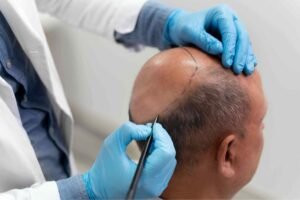
Why Do People Go for Hair Transplants?
Hair transplantation is a significant decision influenced by various personal and external factors. Here are some of the primary reasons why people choose to undergo this procedure:
- Genetic Predisposition: Many individuals experience androgenetic alopecia, commonly known as male or female pattern baldness. This hereditary condition can lead to significant hair thinning and balding, prompting individuals to seek hair transplants as a permanent solution.
- Enhanced Self-Esteem: Hair loss can severely impact self-confidence. A full head of hair is often associated with youth and vitality. Restoring hair through transplantation can enhance self-esteem and improve one’s overall quality of life.
- Natural-Looking Results: Modern hair transplant techniques, such as Follicular Unit Extraction (FUE) and Follicular Unit Transplantation (FUT), provide natural-looking results. The transplanted hair blends seamlessly with existing hair, making it a preferred choice for those seeking realistic outcomes.
- Permanent Solution: Unlike temporary solutions such as wigs or hairpieces, hair transplants offer a permanent solution to hair loss. The transplanted hair follicles are resistant to the effects of DHT (dihydrotestosterone), the hormone responsible for pattern baldness, ensuring lasting results.
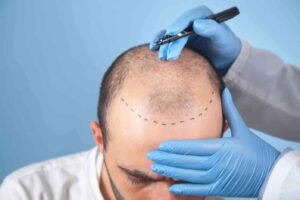
- Minimally Invasive Procedure: Advances in medical technology have made hair transplantation a minimally invasive procedure with minimal discomfort and downtime. This has made it more accessible and appealing to individuals seeking hair restoration.
- Customization and Versatility: Hair transplant procedures can be customized to meet the specific needs and goals of the patient. Whether addressing a receding hairline, thinning crown, or overall hair density, the procedure can be tailored for optimal results.
- Medical Conditions: Conditions such as alopecia areata, traction alopecia, or scarring from injuries and surgeries can also lead to hair loss. Hair transplantation can be an effective solution for individuals with these medical conditions.
Methods of Hair Loss Treatment
Hair transplantation methods have advanced significantly over the years. The two primary techniques are Follicular Unit Transplantation (FUT) and Follicular Unit Extraction (FUE). Here’s an in-depth look at these methods:
Follicular Unit Transplantation (FUT)
Follicular Unit Transplantation (FUT), also known as the strip method, is one of the traditional hair transplant techniques. Here’s how it works:
- Strip Harvesting:
A strip of skin with hair follicles is removed from the donor area, usually the back of the scalp. This area is chosen because it is typically resistant to balding.
- Dissection of Follicular Units:
The strip is dissected under a microscope to separate individual follicular units. Each unit contains one to four hairs.
- Preparation of Recipient Area:
Small incisions are made in the balding or thinning areas of the scalp.
- Grafting:
The dissected follicular units are carefully placed into the incisions. This process is
meticulously done to ensure natural hair growth patterns.
- Recovery:
The donor area is sutured, and patients typically need a few weeks to recover fully. Scarring in the donor area is possible but usually minimal and can be concealed by surrounding hair.
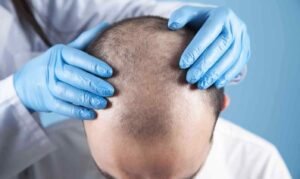
Follicular Unit Extraction (FUE)
Follicular Unit Extraction (FUE) is a more modern technique compared to FUT. It has gained popularity due to its minimally invasive nature. Here’s how FUE works:
- Extraction of Follicular Units:
Individual follicular units are extracted directly from the donor area using a small punch tool. This method does not require the removal of a strip of skin.
- Preparation of Recipient Area:
Similar to FUT, small incisions are made in the recipient area.
- Grafting:
The extracted follicular units are placed into the incisions in the recipient area. This method allows for precise placement and natural-looking results.
- Recovery:
FUE typically has a quicker recovery time compared to FUT. There are no stitches involved, and scarring is minimal, making it a preferred option for many patients.
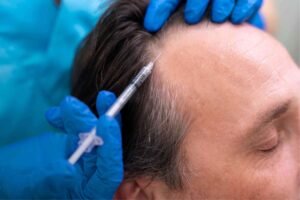
Direct Hair Implantation (DHI)
Direct Hair Implantation (DHI) is a variation of the FUE technique and offers more precision and control. Here’s how DHI works:
- Extraction of Follicular Units:
Similar to FUE, follicular units are extracted from the donor area using a punch tool.
- Implantation:
The extracted follicles are implanted directly into the recipient area using a specialized tool called a Choi implanter pen. This tool allows for simultaneous extraction and implantation, reducing the time the follicles are outside the body.
- Recovery:
The recovery process is similar to FUE, with minimal scarring and downtime. Patients can
typically return to their normal activities within a few days.
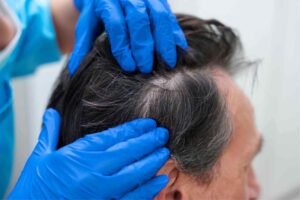
Conclusion
Hair transplantation has become a popular and effective solution for individuals experiencing hair loss. The advancements in techniques such as FUT, FUE, and DHI have made the procedure more accessible and appealing, offering natural-looking and permanent results. Understanding the motivations behind hair transplants, the different methods available, and the expected outcomes can help individuals make informed decisions about their hair restoration journey.
The reasons why people opt for hair transplants are varied and deeply personal. Whether it’s due to genetic predisposition, the desire for enhanced self-esteem, or the need for a permanent solution to hair loss, hair loss treatments offer a viable option for many. The psychological benefits of restoring hair can be profound, alleviating feelings of embarrassment and social anxiety, and allowing individuals to feel more confident and comfortable in their daily lives.
The methods of hair transplantation have evolved significantly over the years, providing more options and better results for patients. From the traditional FUT method to the more modern FUE and DHI techniques, each method has its own set of advantages and considerations. Choosing the right method depends on individual needs, goals, and the expertise of the surgeon.
In conclusion, hair transplantation is a life-changing procedure that offers a permanent solution to hair loss. By understanding the different methods available and the motivations behind the decision, individuals can embark on their hair restoration journey with confidence. The advancements in hair transplant techniques have made it possible to achieve natural-looking results with minimal downtime, allowing individuals to regain their hair and their confidence. Whether you are considering a hair transplant for the first time or looking to learn more about the process, this comprehensive guide provides valuable insights and information to help you make an informed decision.


